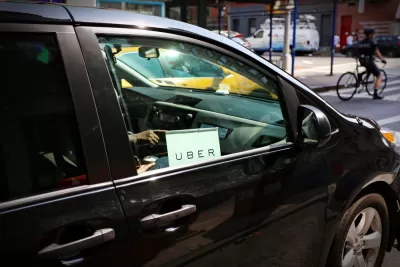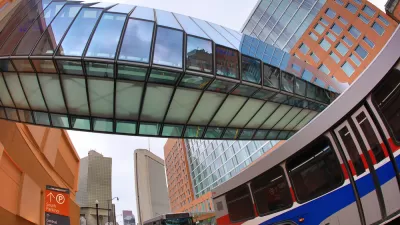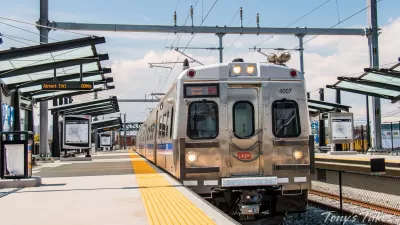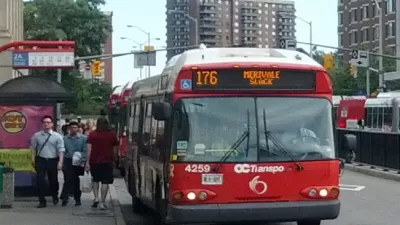Innisfil, Ontario, decided to use Uber instead of starting bus service. The program took off but so have the costs, and now cutbacks need to be made.

Laura Bliss reports on the plan in Innisfil, Ontario, a town north of Toronto, to use Uber in place of public transit. Innisfil’s population had grown in recent years, and local officials considered implementing fixed-route bus service, but the costs would have been high.
Subsidized Uber rides looked like a better option and, starting in 2017, the town started offering $3 to $5 flat fares to particular destinations and $5 fares to the rest of the area. The program has been a success, with 86,000 rides logged in 2018. But the model means costs have gone up because Uber vehicles do not have the capacity of buses.
"Only so many passengers can fit in the backseat of an Uber, and the ride-hailing company, not the town, is pocketing most of the revenue. With per-capita costs essentially fixed, the town is forced to hike rates and cap trips as adoption grows," writes Bliss. Some Innisfil residents who have come to depend on the service feel that the changes are unfair, especially because no bus alternative is available.
Cities have had various motivations for incorporating ridesharing into their public transit systems. And the outcomes have varied, with some places seeing low ridership and others, like Innisfil, struggling with rising costs. "As cities around the world turn to Uber, Lyft, and other apps as a quick fix for mobility service gaps, what’s now happening in Innisfil may be a good example of the risks," notes Bliss.
FULL STORY: ‘Uber Was Supposed To Be Our Public Transit’

Alabama: Trump Terminates Settlements for Black Communities Harmed By Raw Sewage
Trump deemed the landmark civil rights agreement “illegal DEI and environmental justice policy.”

Study: Maui’s Plan to Convert Vacation Rentals to Long-Term Housing Could Cause Nearly $1 Billion Economic Loss
The plan would reduce visitor accommodation by 25% resulting in 1,900 jobs lost.

Planetizen Federal Action Tracker
A weekly monitor of how Trump’s orders and actions are impacting planners and planning in America.

Waymo Gets Permission to Map SF’s Market Street
If allowed to operate on the traffic-restricted street, Waymo’s autonomous taxis would have a leg up over ride-hailing competitors — and counter the city’s efforts to grow bike and pedestrian on the thoroughfare.

Parklet Symposium Highlights the Success of Shared Spaces
Parklets got a boost during the Covid-19 pandemic, when the concept was translated to outdoor dining programs that offered restaurants a lifeline during the shutdown.

Federal Homelessness Agency Places Entire Staff on Leave
The U.S. Interagency Council on Homelessness is the only federal agency dedicated to preventing and ending homelessness.
Urban Design for Planners 1: Software Tools
This six-course series explores essential urban design concepts using open source software and equips planners with the tools they need to participate fully in the urban design process.
Planning for Universal Design
Learn the tools for implementing Universal Design in planning regulations.
Caltrans
Smith Gee Studio
Institute for Housing and Urban Development Studies (IHS)
City of Grandview
Harvard GSD Executive Education
Toledo-Lucas County Plan Commissions
Salt Lake City
NYU Wagner Graduate School of Public Service





























